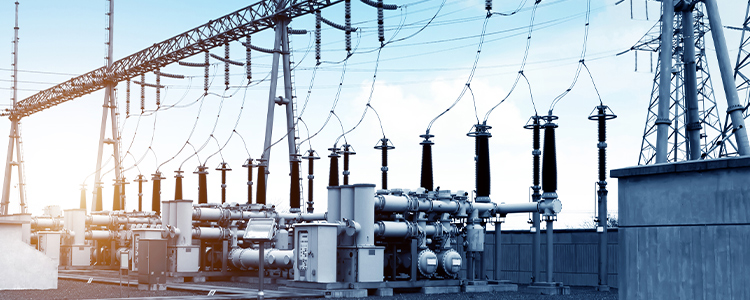- All
- Product Name
- Product Keyword
- Product Model
- Product Summary
- Product Description
- Multi Field Search


Views: 0 Author: Site Editor Publish Time: 2024-12-16 Origin: Site
A manufacturing company had been using an old 1000 kVA transformer (S9 model) that had been in operation for over 15 years. As the transformer aged, the company noticed rising electricity costs, an increasing rate of equipment failures, and escalating maintenance expenses. These factors led to substantial downtime and lost productivity. After an initial assessment, the company decided to upgrade to a more efficient transformer, selecting the newer S13 model. Below is a detailed case study highlighting the energy-saving benefits, economic returns, and long-term value of this decision.
Although the old S9 transformer continued to function, its low efficiency resulted in significant energy waste. Assuming the transformer operated at full load, here are the key efficiency parameters:
· Rated Power: 1000 kVA
· No-load Loss: 2.1 kW
· Full-load Loss: 16 kW (at full load)
The power losses from the old transformer led to significant additional electricity costs for the company, as detailed below:
No-load loss refers to the electricity consumed by the transformer when no load is connected.
Annual no-load power loss:
2.1 kW × 24 hours × 365 days = 18,396 kWh/year
Full-load loss is the power loss when the transformer is operating at maximum capacity.
Annual full-load power loss:
16 kW × 24 hours × 365 days = 140,160 kWh/year
The total annual power loss for the old transformer was:
18,396 kWh + 140,160 kWh = 158,556 kWh/year
Assuming an electricity rate of $0.12 per kWh, the annual electricity cost is:
158,556 kWh × $0.12/kWh = $19,026.72/year
The company decided to upgrade to a modern, high-efficiency S13 transformer. This new transformer has significantly lower no-load and full-load losses, with the following key parameters:
· Rated Power: 1000 kVA
· No-load Loss: 1.3 kW
· Full-load Loss: 12 kW (at full load)
The no-load loss of the new transformer is much lower than that of the old model.
Annual no-load power loss:
1.3 kW × 24 hours × 365 days = 11,414.4 kWh/year
The full-load loss of the new transformer is also significantly reduced.
Annual full-load power loss:
12 kW × 24 hours × 365 days = 105,120 kWh/year
The total annual power loss for the new transformer is:
11,414.4 kWh + 105,120 kWh = 116,534.4 kWh/year
Annual electricity cost:
116,534.4 kWh × $0.12/kWh = $13,984.13/year
By upgrading to the high-efficiency transformer, the company now saves significantly on electricity costs each year:
· Annual Savings:
$19,026.72 - $13,984.13 = $5,042.59/year
Assuming the procurement and installation cost for the new transformer is $30,000, the company will recover this investment through the annual electricity savings.
The Return on Investment (ROI) for this transformer upgrade is calculated based on the initial cost of the new transformer and the annual savings in electricity costs. Given that the new transformer costs $30,000, and the company saves $5,042.59 per year in electricity bills, the time required to recover the initial investment is:
ROI Timeframe = Initial Investment / Annual Savings
ROI Timeframe = $30,000 / $5,042.59 ≈ 6 years
Thus, the company will fully recover its investment in approximately 6 years and start generating savings beyond that point.
Considering the expected lifespan of the new transformer is 20 years, the company will achieve the following total savings over the next two decades:
· Annual Savings: $5,042.59
· Total Savings Over 20 Years:
$5,042.59 × 20 years = $100,851.80
Thus, over a 20-year period, the company will save more than $100,000 in electricity costs, significantly increasing the return on investment.
In addition to electricity savings and ROI, the transformer upgrade offers several other benefits:
· Reduced Failure Rates and Downtime: The high-efficiency design of the new transformer is more stable, reducing the frequency of failures and minimizing downtime and repair costs.
· Enhanced System Safety: The new transformer is equipped with advanced monitoring systems that allow for real-time performance tracking, enabling early detection of potential issues and ensuring a safe, stable operation.
· Environmental Benefits: Modern transformers use eco-friendly insulation oil and more efficient cooling systems, reducing the environmental impact.
By upgrading to a high-efficiency transformer, the company not only significantly reduces electricity costs but also improves the safety and reliability of the power system, and lowers the risk of equipment failure. With a payback period of under 6 years, and over $100,000 in savings over the next 20 years, this investment is a strategic decision that will enhance the company's operational efficiency and long-term profitability.
Upgrading your transformer is not just a cost-saving move, it’s a smart business strategy for sustainable growth. By reducing energy waste and lowering risks, your business can gain a competitive advantage and drive long-term success.